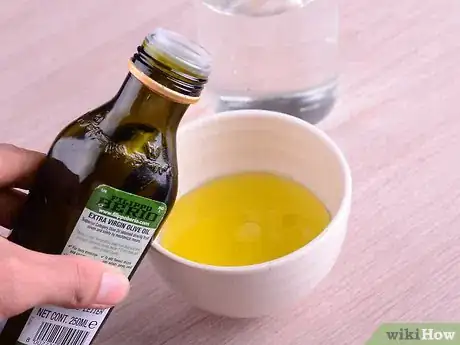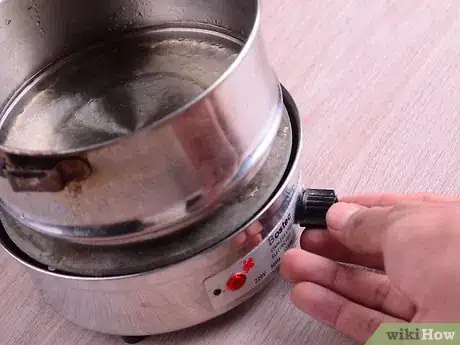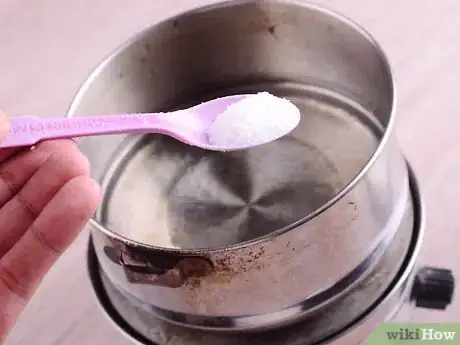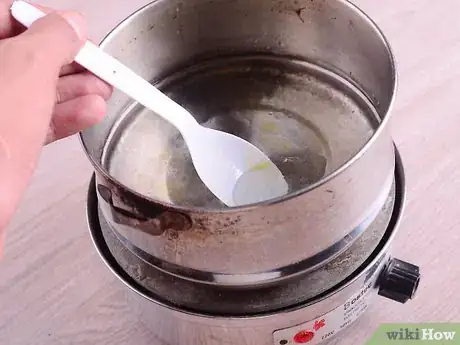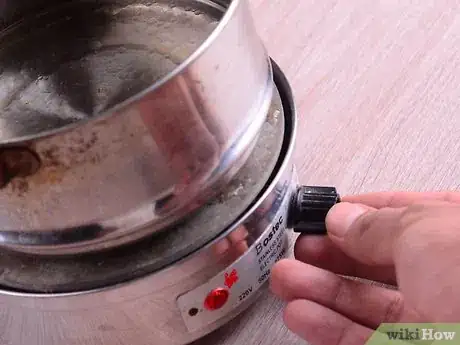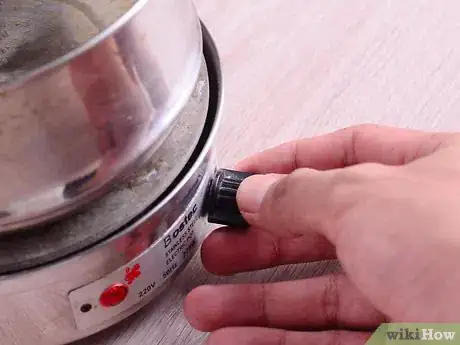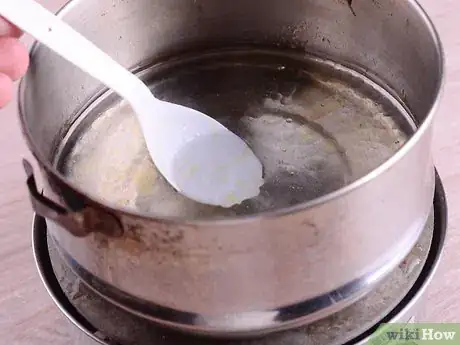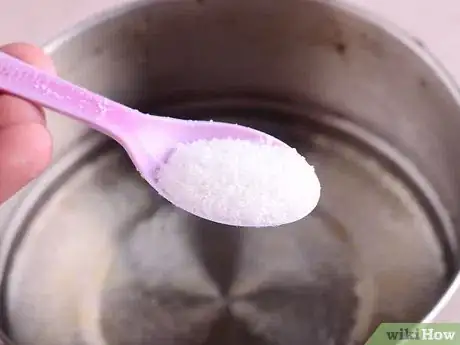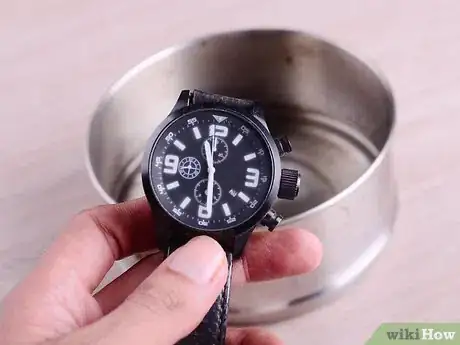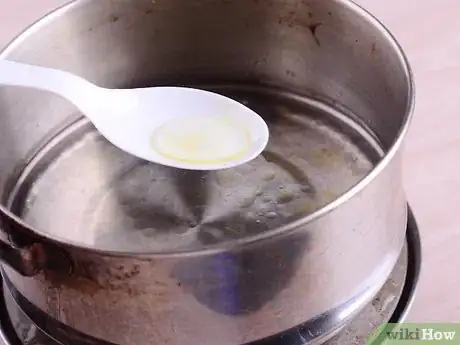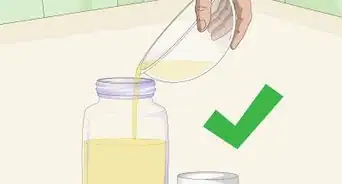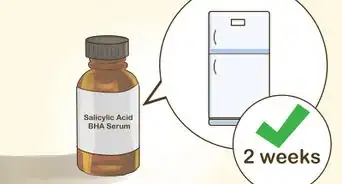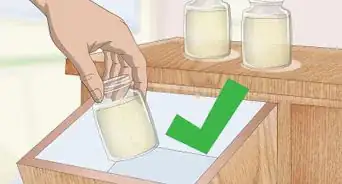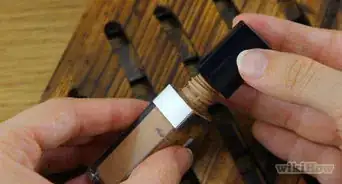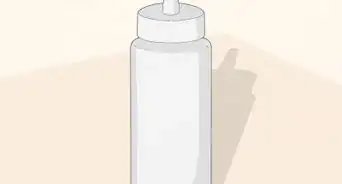This article was co-authored by wikiHow Staff. Our trained team of editors and researchers validate articles for accuracy and comprehensiveness. wikiHow's Content Management Team carefully monitors the work from our editorial staff to ensure that each article is backed by trusted research and meets our high quality standards.
This article has been viewed 110,104 times.
Learn more...
If you enjoy making your own soaps and skin care products or just prefer natural beauty products, you probably know how versatile glycerin is. You can use it to mix your own soap, cleansers, moisturizers, shampoos, facial masks, and other personal care products because it's an extremely effective cleanser, toner, and moisturizer. While you can purchase glycerin, you may enjoy making it yourself -- particularly if you want a vegetable version that doesn't use any animal fats. By mixing oils and lye, you can create a chemical reaction that forms vegetable glycerin, and as long a you have a candy thermometer, you don't need to be a chemistry expert to get it done. Keep in mind that lye is an extremely caustic substance, though, so it must be handled with care.
Ingredients
- 1 cup (200 g) coconut oil
- 1 cup (240 ml) olive oil
- 2 tablespoons (30 g) lye
- 1 cup (240 ml) water
- ½ cup (150 g) salt
Steps
Mixing the Oils and Lye
-
1Combine the coconut and olive oils in a saucepan. Add 1 cup (200 g) of coconut oil and 1 cup (240 ml) of olive oil to a large saucepan. Stir the two together briefly, though they won’t blend completely until they are heated.[1]
- You can substitute palm, vegetable, soybean, or jojoba oil for the coconut and olive oils.
-
2Heat the oils on high. Place the saucepan with the oils on your stovetop. Turn the heat to high, and allow the mixture to heat for 1 or 2 minutes or until the coconut oil begins to melt.[2]
- Make sure to wear safety goggles or glasses, rubber gloves, and a face mask to protect yourself from the high temperature and the lye that you’ll use in the next step. Wearing long pants and a long-sleeve top are also a good idea.
Advertisement -
3Mix the lye and water together. While the oils are heating, add 2 tablespoons (30 g) of lye into 1 cup (240 ml) of water in a heat-safe glass container. Be sure to add the lye into the water and not the other way around, because adding water to lye can cause the lye to expand out of the container.[3]
- Online retailers are usually the best place to purchase lye. It can be difficult to find in brick and mortar stores.
- When you’re working with lye, adequate ventilation is important. Open some windows and/or turn on a fan.
-
4Stir the lye mixture into the oils. Once you’ve mixed the lye and water, carefully pour the mixture into the oils in the saucepan. Mix well to ensure that the ingredients are thoroughly combined.[4]
- Be careful as you mix the lye and water in so the mixture doesn’t come into contact with your skin.
- If you get lye on your skin, flush your skin immediately with cold water and take off any clothing that it may have splashed on. Continue flushing the skin with water for 15 minutes, and then seek medical attention.
Thickening the Mixture
-
1Heat the mixture to the right temperature. After you’ve added the lye solution to the oils, attach a clip-on candy thermometer to the side of the saucepan. Continue heating the mixture on high until the temperature reaches 125 degrees Fahrenheit (52 degrees Celsius), which should take approximately 20 minutes.[5]
- Getting the mixture to the right temperature is very important when making vegetable glycerin so you must use a thermometer to make sure that the mixture is hot enough.
- Make sure to stir the mixture regularly so all of the ingredients are well blended.
-
2Lower the mixture’s temperature. Once the mixture reaches 125 degrees Fahrenheit (52 degrees Celsius), turn down the heat to medium or medium-low. You want to bring the mixture’s temperature down until it falls to 100 degrees Fahrenheit (38 degrees Celsius).[6]
-
3Stir the mixture until it thickens properly. After you’ve brought the mixture’s temperature down to 100 degrees Fahrenheit (38 degrees Celsius), continue stirring it for another 10 to 15 minutes over the heat. The mixture should thicken enough that the outline of the spoon’s path remains visible for a few seconds after you trace it through.[7]
- Don’t cook the mixture too long, or it may become too thick to stir.
Finishing Off the Glycerin
-
1Remove the pan from the heat and add the salt. Once the mixture has reached the proper consistency, take the pan off the heat. Mix in ½ cup (150 g) of salt, and stir well so it is thoroughly incorporated.[8]
- Make sure that the mixture is still hot when you add in the salt.
-
2Allow the mixture to cool. After you’ve mixed the salt into the lye and oil mixture, leave it to cool completely, which should take 20 to 30 minutes. As it cools, the soap and glycerin will gradually separate into different layers.[9]
- The soap will solidify into a thick layer on the top of the mixture, while the glycerine will remain liquid-y on the bottom.
-
3Skim the top layer from the mixture. When the mixture has cooled completely, pour off the top soap layer from the top of the glycerin. You may find it easier to use a spoon to gently lift the soap off, though.[10]
- If you want to use the soap, add it to a soap mold and put it in the freezer for 24 hours. Let the soap bars air dry for at least 2 to 3 weeks to finish curing them.
- If you don’t want to make soap, you can discard the soap layer.
-
4Pour the glycerin into a glass bottle. Once you’ve removed the soap from the top of the mixture, transfer the liquid vegetable glycerine to a glass bottle. Seal the container tightly, and store it in the refrigerator.[11]
- The vegetable glycerin should keep in the fridge for at least 3 to 4 weeks. You'll know that it has gone bad if it is no longer clear and instead appears cloudy. Glycerin that has gone bad may also develop a foul smell.
Community Q&A
-
QuestionIs this glycerin edible?
 Community AnswerGlycerin is edible, although I wouldn't recommend eating it, as it may taste bad.
Community AnswerGlycerin is edible, although I wouldn't recommend eating it, as it may taste bad. -
QuestionWhat is lye, and how can I get it in Nigeria?
 Community AnswerLye, or sodium hydroxide, is an ingredient commonly used in soap making. You should be able to find it in a hardware store or craft shop. If it's not available in your area, you can order it from Konga Retail in Lagos.
Community AnswerLye, or sodium hydroxide, is an ingredient commonly used in soap making. You should be able to find it in a hardware store or craft shop. If it's not available in your area, you can order it from Konga Retail in Lagos. -
QuestionCan I use normal sunflower oil instead?
 Rose Martinsen BurrellCommunity AnswerYes. using sunflower is a great choice if you don't have any of the other oils.
Rose Martinsen BurrellCommunity AnswerYes. using sunflower is a great choice if you don't have any of the other oils.
Warnings
- If you get any lye in your skin or eyes, remove any clothing that it may have splashed on and flush the affected area with cold water for at least 15 minutes. Immediately, seek medical attention afterward.⧼thumbs_response⧽
- You should always work with lye in a well-ventilated area to ensure that the fumes don’t cause any damage. Open the windows and turn on a fan to keep yourself safe.⧼thumbs_response⧽
- Lye is an extremely caustic substance, so it can easily burn the skin. You must wear protective safety gear, including safety goggles, rubber gloves, a face mask, and long pants and sleeves while working with it.⧼thumbs_response⧽
Things You’ll Need
- Large saucepan
- Large bowl
- Safety goggles
- Rubber gloves
- Face mask
- Candy thermometer
- Spoon
- Airtight glass bottle
References
- ↑ http://www.motherearthnews.com/natural-health/old-school-beauty-making-glycerin-zbcz1304zold
- ↑ http://www.motherearthnews.com/natural-health/old-school-beauty-making-glycerin-zbcz1304zold
- ↑ https://www.soapqueen.com/bath-and-body-tutorials/tips-and-tricks/back-to-basics-lye-safety-guide/
- ↑ http://sciencing.com/make-glycerin-vegetable-oil-7830349.html
- ↑ http://sciencing.com/make-glycerin-vegetable-oil-7830349.html
- ↑ http://www.motherearthnews.com/natural-health/old-school-beauty-making-glycerin-zbcz1304zold
- ↑ http://www.motherearthnews.com/natural-health/old-school-beauty-making-glycerin-zbcz1304zold
- ↑ http://sciencing.com/make-glycerin-vegetable-oil-7830349.html
- ↑ http://sciencing.com/make-glycerin-vegetable-oil-7830349.html
About This Article
Vegetable glycerin is a versatile ingredient you can use to make a variety of cosmetic products, like soap, shampoo, and moisturizers. To make your own vegetable glycerin, you’ll need 1 cup each of coconut oil, olive oil, and water, 2 tablespoons of lye, and ½ cup of salt. Be careful not to get the lye on your skin, since this can burn. You’ll need to heat the oils together over the stove, then mix in the combined lye and water, and heat it for about 20 minutes until it reaches 125 degrees Fahrenheit. Then, turn your stove down and stir the ingredients until they’re thick. After that, add the salt and leave it to cool. For more tips, including how to store your vegetable glycerin, read on!
